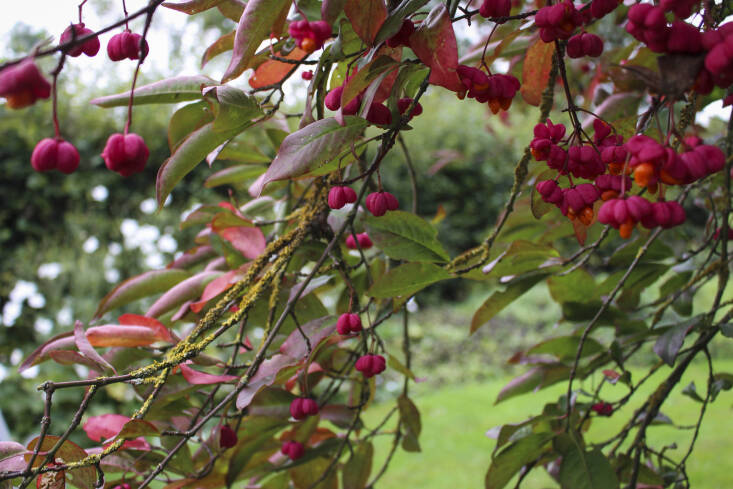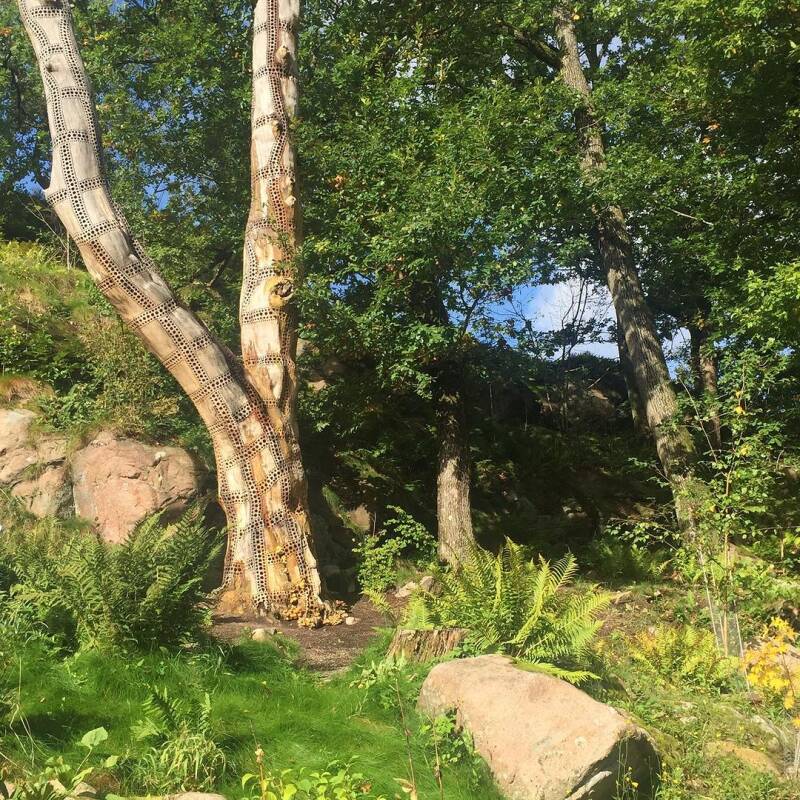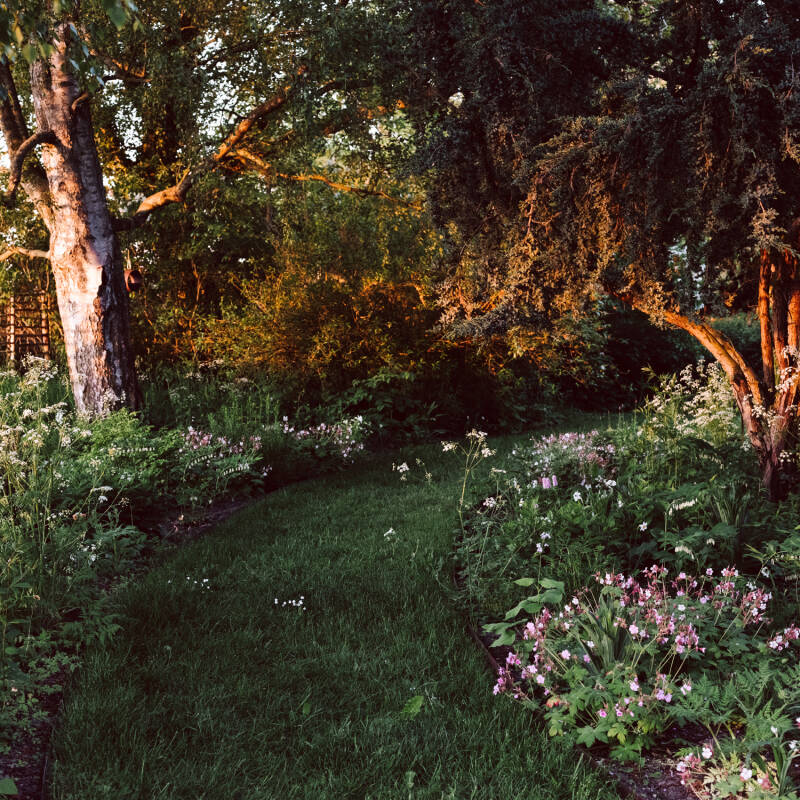Spindle: Euonymus (alatus and europaeus)
Amid the decadent colors of fall, spindle, or spindle tree, adds another dimension. With retina-confusing orange berries popping out of hot pink cases, they are fantastically psychedelic. The foliage can be just as arresting, giving the Asian natives (Euonymus alatus) the common name ‘burning bush’, although the Europeans (Euonymus europaeus) deliver on leaf color as well. In a garden that is relaxed enough to tolerate certain prized specimens that sing for only one season, spindle is a must.
Photography by Kendra Wilson.

While ladybugs and wasps warn off birds with their bright colors, orange spindle berries are attractive beacons, particularly loved by European robins. In some American states, avian dispersal of seeds can be too successful and the American native ‘strawberry bush’ Euonymus americanus, (with rough shells and deeper orange berries) is a better choice.
Euonymus is a genus of shrubs that include evergreens that are best known for ornamental hedging (Euonymus fortunei, E. japonicus). This deciduous spindle makes a shrubby tree that flowers in an unremarkable way in spring, only making its presence known in fall.

Recommended cultivars for the best ornamental value are: E. alatus ‘Timber Creek’ and ‘Fireball’. A compact version for smaller gardens is suitably named E. alatus ‘Compactus’. European cultivars that hold the RHS Award of Garden Merit are Euonymus europaeus ‘Thornhayes’ and ‘Red Cascade’.

Cheat Sheet
• A middle-story large deciduous shrub or small tree, spindle is a good mingler, not being at all showy until fall. Euonymus alatus is smaller, at 6-7 feet tall and wide (when full grown), while E. europaeus is almost twice as big.
• Rangy and somewhat untidy, spindle can be persuaded into more of a tree shape through judicious but light pruning, focusing on the main stem and removing any lower branches.
• All parts of the plant are toxic; only handle with gloves.

Keep it Alive
• Found on a woodland edge, spindle thrives in any soil that is not waterlogged, in sun or dappled shade. Useful in a north-facing spot.
• Hardy to USDA zones 6, spindle tree tolerates some exposure.
• Generally problem-free.









Have a Question or Comment About This Post?
Join the conversation